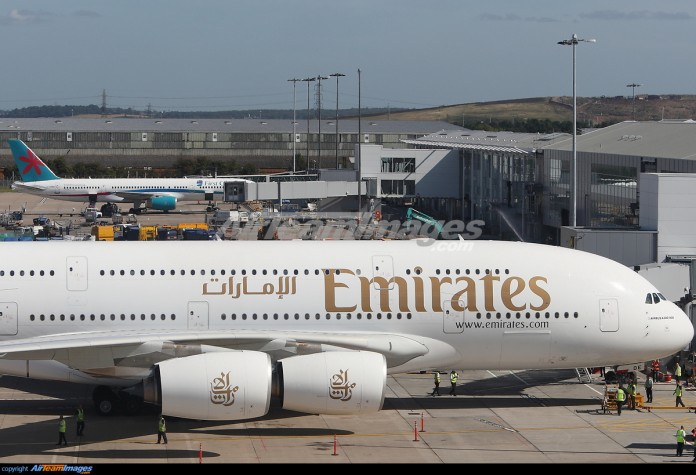“We are very excited to be the first airline to introduce the iconic A380 into the region.”
The aircraft, weighing in at staggering 560 tons, landed on Birmingham soil in preparation for the airline’s inaugural Dubai service on Easter Sunday.
The impressive plane, which takes over an hour to refuel, is set to replace the carriers daily lunchtime service which was previously run by a Boeing 777.
With a capacity for over 557 economy passengers and 58 business-class passengers across two decks, the aircraft will help increase the carrier’s daily capacity to the Middle East region by 15 per cent and will create more routes accessible for British travellers.
The A380’s arrival in Birmingham means the UK is now serviced by 77 such flights by the UAE flag-carrier every day.
Announcing the aircrafts introduction to Birmingham Airport last December, Laurie Berryman, Emirates’ vice president for the UK, said: ‘In 15 years of operating at Birmingham, Emirates has experienced exceptional levels of growth driven by an increase in demand from the Midlands.
‘The A380 is hugely popular amongst our passengers as it provides a unique level of service that has become synonymous with the Emirates brand. We are very excited to be the first airline to introduce the iconic A380 into the region.”
Passenger Alison Gabrielle who was on the inaugural flight into Birmingham commented: “As a Bollywood cellist I fly to Asia and the Middle East almost on a monthly basis.
“I live 20 minutes from Birmingham Airport, so being able to fly on an A380 from so close to home means that I can travel in even more comfort during my work trips, which when you fly as regularly as I do means a great deal.”
Over £1 million has been invested into changes at Birmingham Airport to accommodate the colossal aircraft, including a longer runway and a new air bridge designed so passengers can disembark from both decks of the plane at the same time.
Craig Burrows, from Emirates, said: “The challenge is trying to turn the aircraft around safely and securely.
“We need extra ground service equipment which we have to ensure gets on the aircraft safely and there’s more fuel up-lift and a lot more baggage to be carried on the aircraft due to the bigger number of passengers.”






































